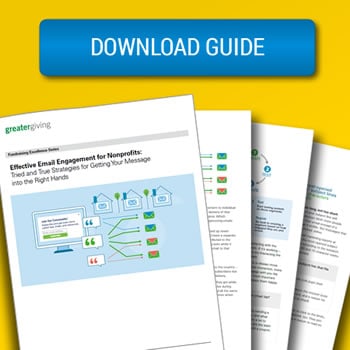
Designing an event invitation guaranteed to grab attention and spark interest in your next fundraiser can be a challenge.
Whether it’s a traditional paper invitation received through the mail, or a digital invitation, the first seconds an invite is received determines whether it will be opened or ignored. Providing just enough information to motivate your invitee to attend, a suggestion of the theme, and a memorable design all factor into the hook that convinces someone to open your invitation and get excited about attending your event.
When designing your next invitation ensure you’ve provided all the most important information to influence your guests’ to join you. Here are the basics:
Event Name and Logo
Pique your potential attendee’s interest in your fundraiser immediately by making your event’s name and logo the most prominent feature on your invitation. Presenting it in color is recommended to make it stand out from the rest of the text, and pay attention to the placement, as you don’t want it to overshadow other pertinent information.
The Nonprofit’s Logo
 In most cases, if your nonprofit’s name and logo is generally familiar to the public it is acceptable to make it the less prominent than the name and logo of the event. The familiarity of it will catch the viewer’s eye, however, it should always be easily found by the recipient. If it’s branding is not commonly known you may want to emphasize it in an attempt to increase awareness.
In most cases, if your nonprofit’s name and logo is generally familiar to the public it is acceptable to make it the less prominent than the name and logo of the event. The familiarity of it will catch the viewer’s eye, however, it should always be easily found by the recipient. If it’s branding is not commonly known you may want to emphasize it in an attempt to increase awareness.
The Cause
Put your nonprofit’s mission upfront with a tagline or brief explanation that will tell your potential guest what the need is, goals or current activity, and why their attendance is so important to gaining ground on the challenges faced. This is your chance to provide an emotional link to the cause, which often determines their level of participation.
What They Can Expect
Potential guests will be interested in knowing more details about your event as they decide whether or not to attend. Provide them with general information about featured speakers or other program details, the meal service, clothing formality (if needed) and, if you are hosting a silent auction or raffle, you may want to mention a few big-ticket items that will be available to bid on.
The Basics
Now it’s time to deliver the basics. The date, time and venue address must be clearly visible and grouped together for easy referencing. A map to the venue may be recommended if it is not generally known or is off the beaten path.
RSVP and Registration Instructions
Directing them to your website, or offering an email address or a phone number will simplify the registration process. Include information about special program events they can take part in, like a silent auction, raffles, games, etc. If there are special featured events that require a reservation you should offer that information, as well. Be sure to make all this information clear and easy to read.
The Ask
A call for donations is appropriate on an event invitation. This will direct interested parties to make a donation if the recipient is unable to attend and can generate a spirit of giving prior to the event for those who plan to join you there. Ask become a part of your mission and direct them to your nonprofit’s website.
Ensure that your event makes the right first impression with an invitation that is informative, comprehensive, and beautiful. Including important information about the nonprofit, it’s mission, and what guests need to do to register for your event is essential to getting them through the registration process and attending the event you’ve planned for them.
